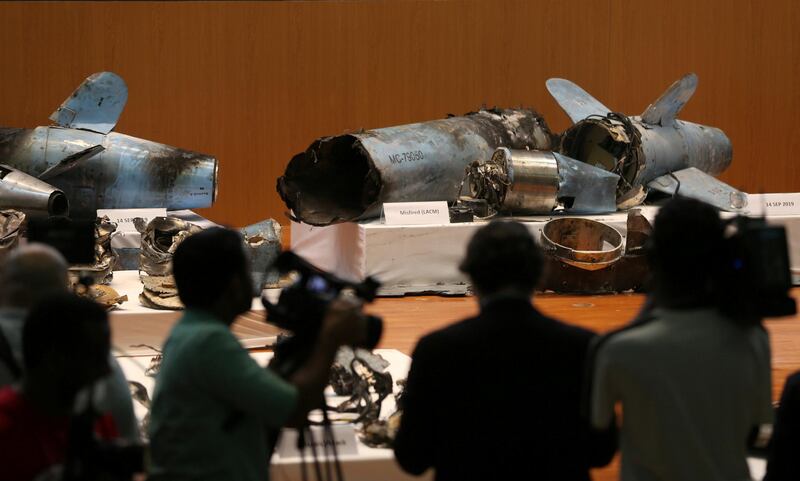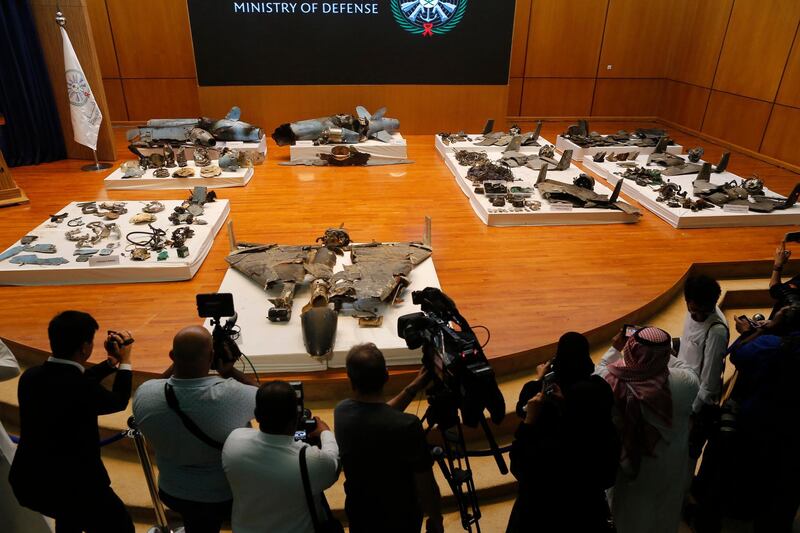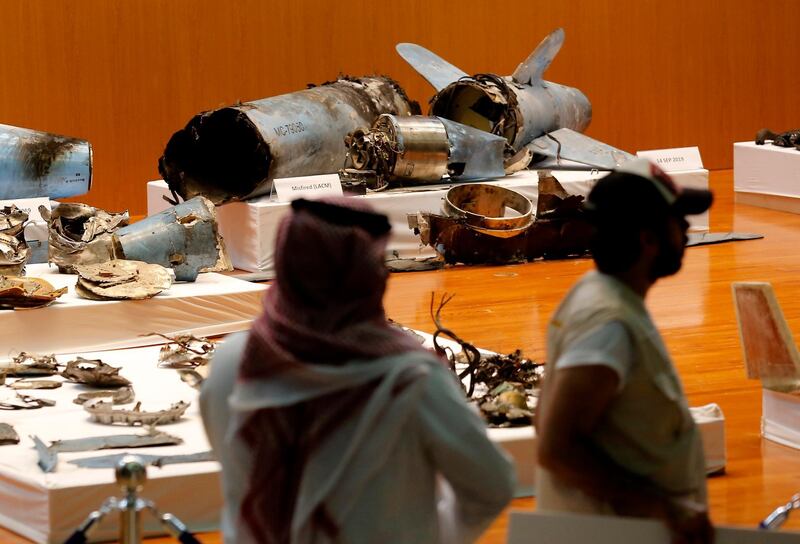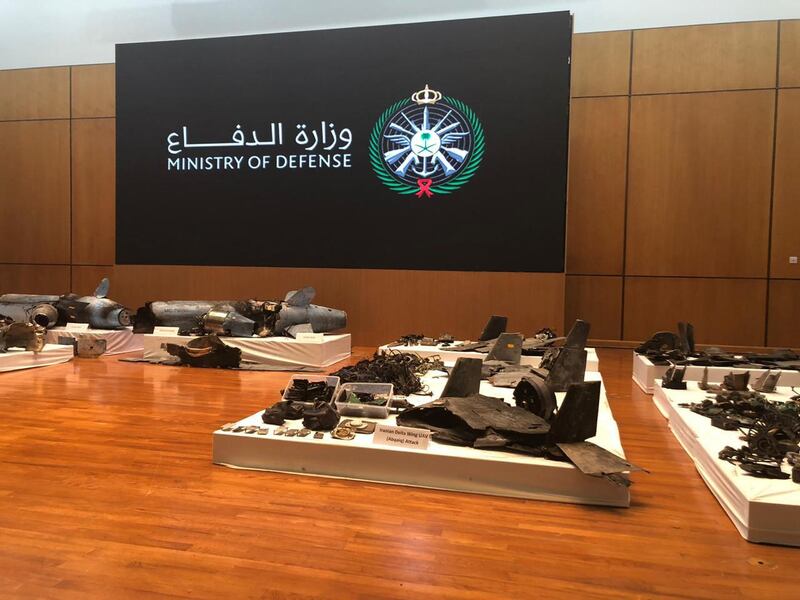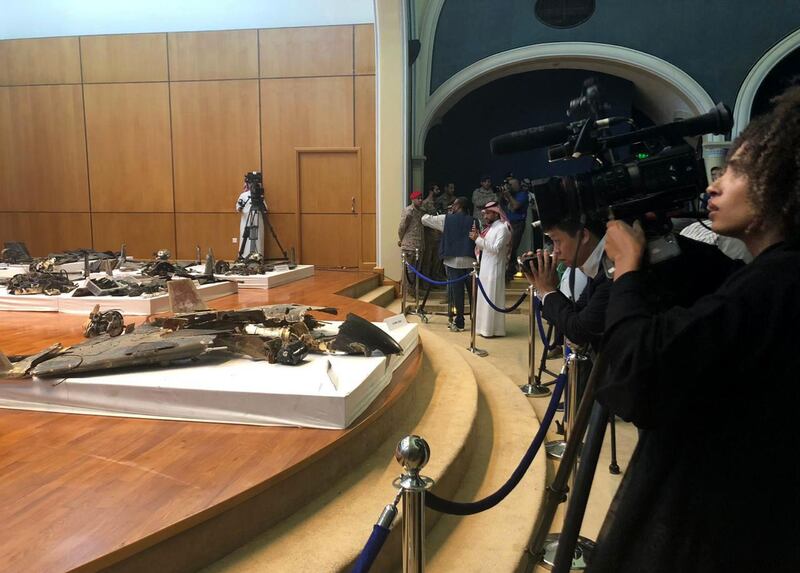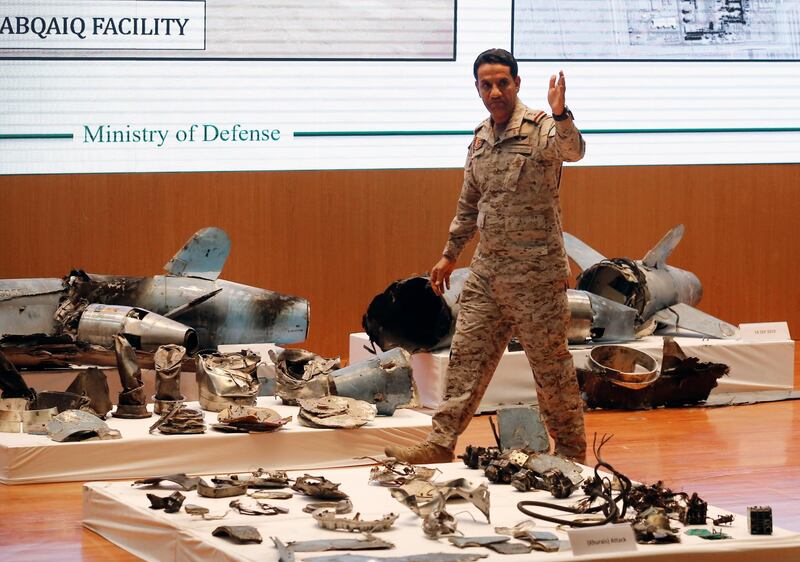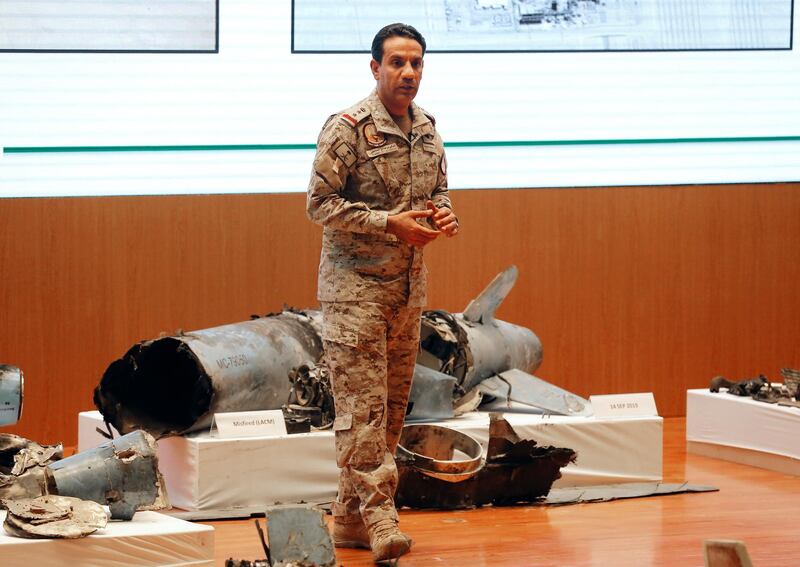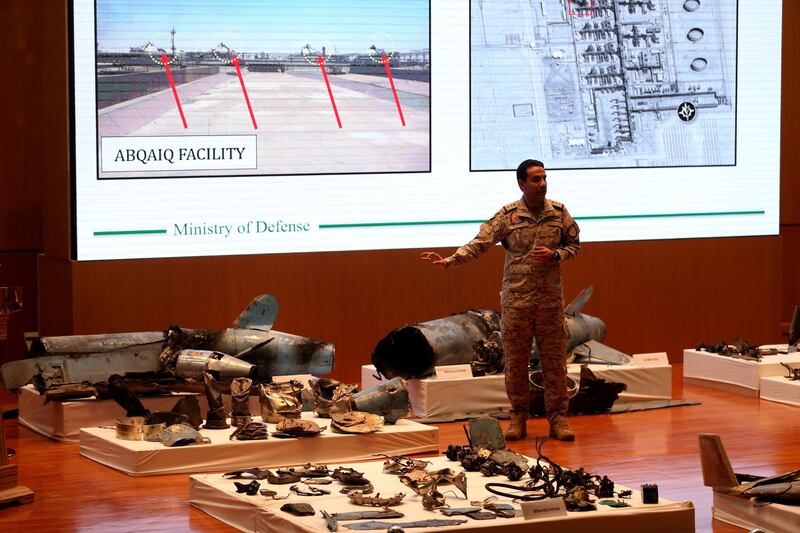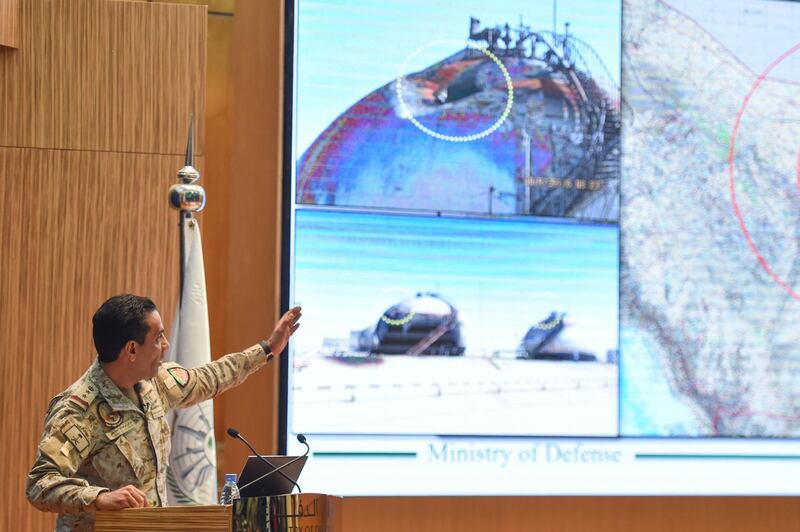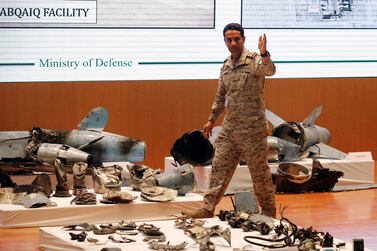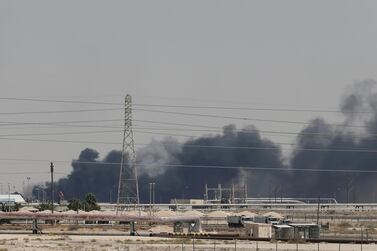Saudi Arabia has displayed remnants of what it described as Iranian drones and cruise missiles used in an attack on its oil facilities as "undeniable" evidence of Iranian aggression.
During a televised press conference on Wednesday Defence Ministry spokesman Colonel Turki Al Malki said a total of 25 drones and missiles were launched at two oil plants in last weekend's strikes, including what he identified as Iranian Delta Wing unmanned aerial vehicles and "Ya Ali" cruise missiles.
It was the most detailed account given of the attacks yet. So what do we know so far about the incident and its ramifications for international relations?
What exactly happened?
Two key Saudi oil facilities, Abqaiq and Khurais, came under attack at about 4am local time (5am UAE) on Saturday, September 14. Explosions and fires were reported at the facilities, but were brought under control within hours. No deaths or injuries were reported.
Yemen's Iran-backed Houthi rebels, who are fighting the Saudi-led coalition, claimed responsibility for the strikes, but doubts were quickly raised over their ability to carry out such a sophisticated attack.
The damage from the attacks caused an interruption to an estimated 5.7 million barrels in oil supplies, pushing the oil price up more than 19 per cent when markets resumed trading on Monday.
What types of drones and missiles were used?
Col Al Malki said 18 drones and seven cruise missiles were launched in the assault, with three missiles failing to make their targets.
He said both drones and missiles were launched at Abqaiq, home to the world's largest oil processing facility, and that cruise missiles had targeted Khurais.
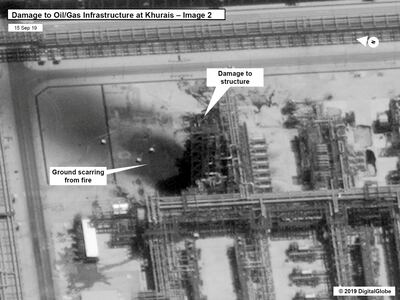
The weapons included what Col Al Malki identified as Iranian Delta Wing unmanned aerial vehicles (UAV) and "Ya Ali" cruise missiles. He said the missiles have been used by Iran's Revolutionary Guards.
Who is to blame for the attacks?
Although the Iran-backed Houthi rebels in Yemen claimed responsibility for the attacks, both Saudi Arabia and Washington have accused Tehran of playing a vital role.
But while the US has said that Iran was behind the attack, Saudi Arabia has not yet directly accused Iran of firing the weapons or launching them from inside Iranian territory.
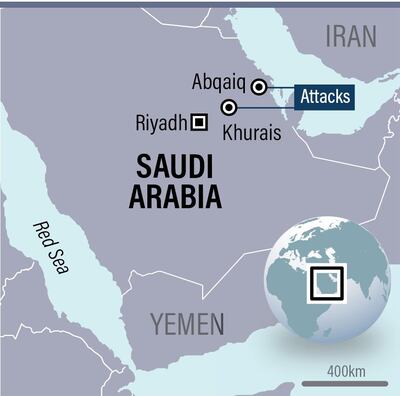
Col Al Malki told journalists the attack was "launched from the north and was unquestionably sponsored by Iran".
Iran has denied any involvement.
Military analysts who have studied the Yemen war say that the range, scale and complexity of the attack on the Saudi oil installations far exceed any capabilities that the Houthis have previously demonstrated.
What happens next?
The UAE and the US have led global condemnation of the attack, but it remains to be seen what the full ramifications will be. US President Donald Trump tweeted on Wednesday that he had ordered the Treasury to increase financial pressure on Iran with "substantial" sanctions.
UN experts are expected to lead an international inquiry, according to unnamed diplomats quoted by AFP.
"It's very good that an international probe will get underway," said one diplomat on condition of anonymity. Another source said the experts were either traveling to, or already in Saudi Arabia.
The UN experts have been dispatched under the terms of a Security Council resolution on the 2015 nuclear deal with Iran, and another resolution on a Yemen arms embargo, the diplomats said.
The 2015 resolution stipulates that UN experts can be sent if military hardware made in Iran are found elsewhere.
Why was the attack so disruptive to global oil supplies?
The attack not only temporarily knocked out over half of the country's production, it also removed almost all the spare capacity available to compensate for any major disruption in oil supplies worldwide.
The attack cut 5.7 million barrels per day (bpd) of Saudi crude output, over 5 per cent of the world's supply. But the attack also constrained Saudi Arabia's ability to use the more than 2 million bpd of spare oil production capacity it held for emergencies.
The kingdom has for years been the only major oil producing country that has kept significant spare capacity that it could start up quickly to compensate for any deficiency in supply caused by war or natural disaster.
Most other countries cannot afford to drill expensive wells and install infrastructure, then maintain it idle.
Before the attack, the Organisation of the Petroleum Exporting Countries (OPEC) global supply cushion was just over 3.21 million barrels per day (bpd), according to the International Energy Agency (IEA).
Saudi Arabia – the de facto leader of OPEC – had 2.27 million bpd of that capacity. That leaves around 940,000 bpd of spare capacity, mostly held by Kuwait and the UAE.
